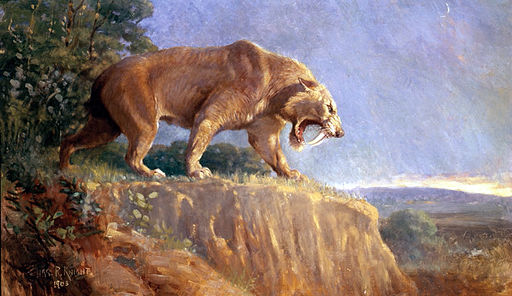The Iconic Saber-Toothed Cat of the Ice Age
Smilodon, commonly known as the saber-toothed cat or saber-toothed tiger, was a remarkable predator that lived during the Pleistocene epoch, roughly 2.5 million to 10,000 years ago.

| Meaning | Carving knife tooth [Smil-odon] |
| Pronunciation | SMY-loh-don |
| When: | Pleistocene (about 2.5 million to 10,000 years ago) |
| Where: | North and South America North and South America |
| What: | Mammal (carnivorous mammal) |
| Weight: | Estimated around 160–280 kg (350–620 pounds), depending on species |
| Length: | Approximately 1.6–2.2 meters (5.3–7.2 feet) excluding the tail |
| Diet: | Carnivorous (primarily large herbivores such as bison, camels, and horses) |
| Discovered: | First described by Danish naturalist Peter Wilhelm Lund in 1842 |
Recognized for its distinctive, elongated canine teeth, which could grow up to 30 centimeters (12 inches) in length, Smilodon is one of the most iconic mammals of the Ice Age.
Smilodon had a robust build with powerful forelimbs and a short tail, indicating its adaptation for hunting large prey.
Its teeth were well-suited for delivering precise and powerful bites to incapacitate its victims, which likely included large herbivores such as bison, horses, and even mammoths.
Despite its fearsome appearance, Smilodon was not related to modern-day big cats like lions or tigers but belonged to a separate family called Machairodontinae.
Fossil discoveries of Smilodon have been primarily in North and South America, particularly in regions with abundant Pleistocene megafauna.
The extinction of Smilodon, along with many other Ice Age mammals, is still debated among scientists, with factors such as climate change, human hunting, and competition from other predators possibly playing significant roles.
Nonetheless, Smilodon remains an iconic symbol of the prehistoric world, showcasing the diverse adaptations and evolutionary strategies of ancient mammals.
